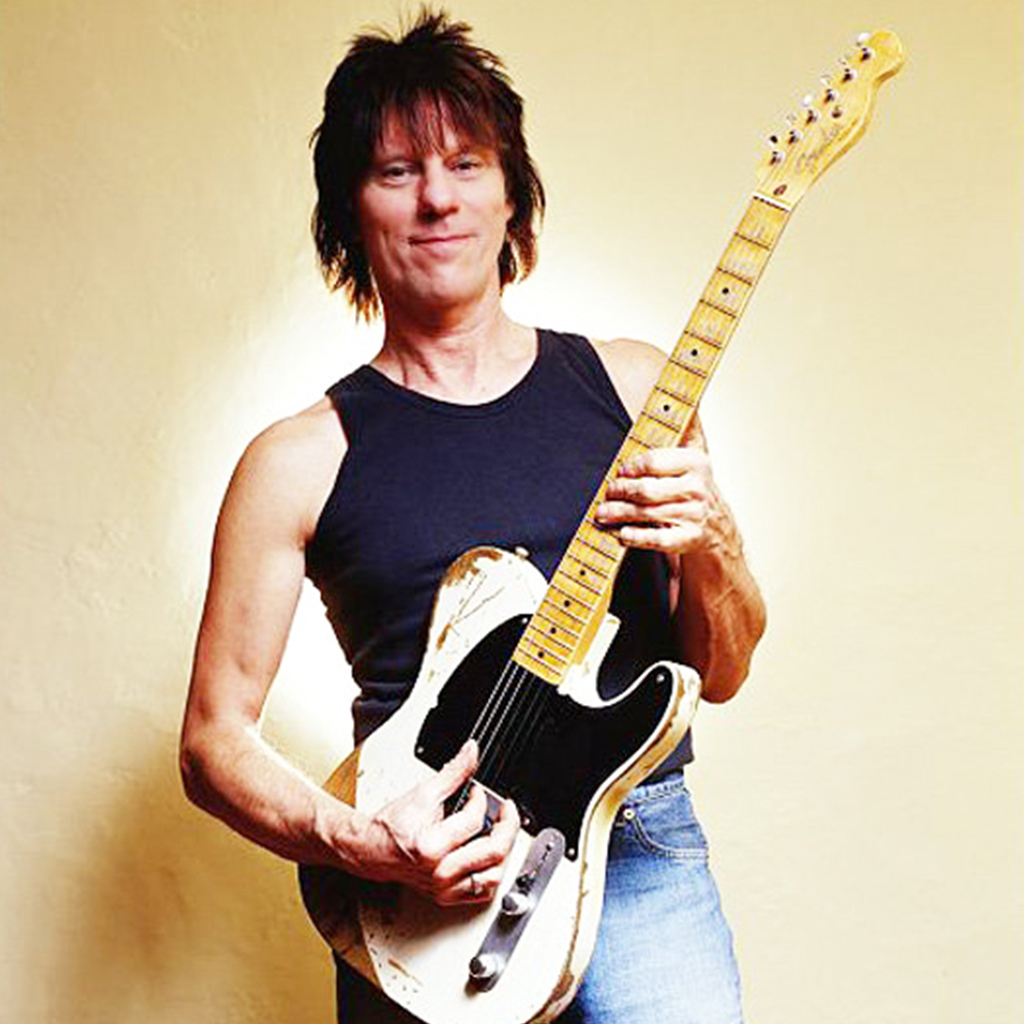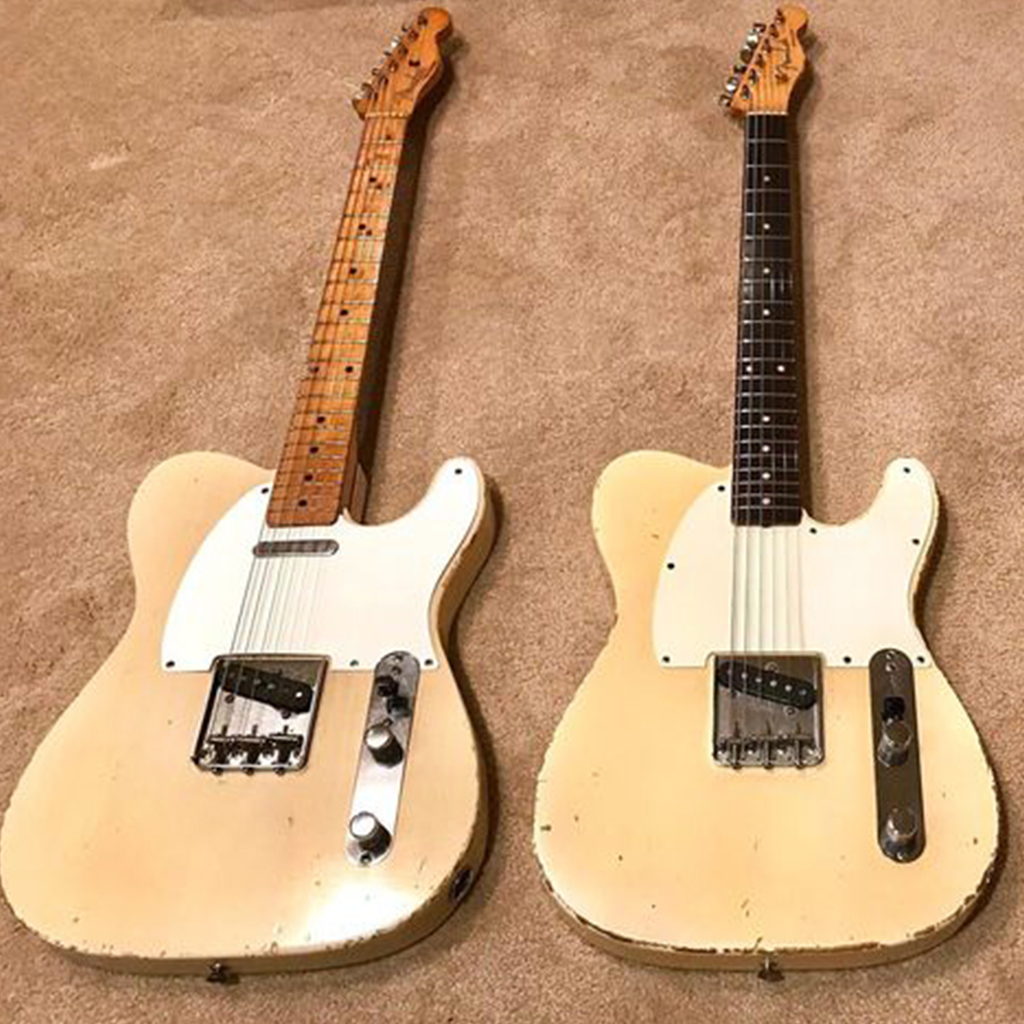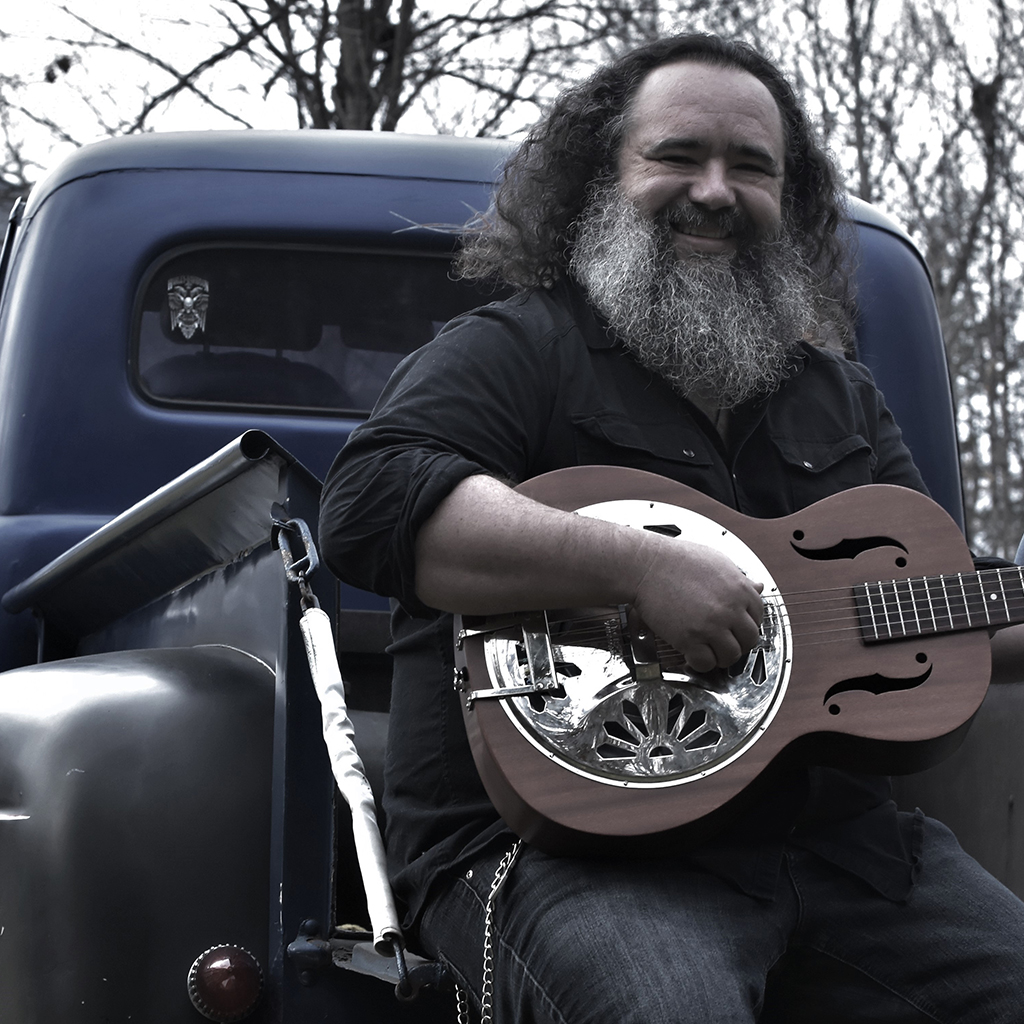
A few weeks ago, while brainstorming articles for this website, Sabine (the creator of Heartelier) commented on the guitar I was holding in one of my social media profile pictures.
“The lovely guitar you are carrying on your profile picture. My guitar teacher has one of those. I love the sound. Maybe a historical article about those? What do you think?”
Indeed, if your guitar teacher has one of these exact ones, he’s a fortunate man, and I’m eternally jealous.
The guitar in question was a 1956 Fender Esquire that I had the privilege to play while visiting the legendary Gruhn Guitars in Nashville, TN, in the winter of 2020 (right before the world shut down).

The guitar practically played itself. The neck was amazingly comfortable, the body was worn with the scars of several gigs and jams over the years, and it sounded fantastic. The single pickup (compared to a Telecaster’s two-pickup design) offered plenty of tones by simply manipulating the controls.
The one thing that wasn’t so great about it? The price tag of $18,000! Surely a bargain for a guitar of this age, condition and pedigree, but for us mere mortals, slightly out of reach.
What is it about these guitars that’s so special?
From the beginning…
The Fender Musical Instrument Corporation, founded in 1938 by Leo Fender (originally as a radio repair shop before focusing on musical instruments and amplifiers) began producing electric instruments in the mid-1940s, particularly lap steel guitars which incorporated the now-famous bridge design that had a suspended single-coil pickup.
In the late 1940s, Fender began experimenting with creating a solid-body electric guitar. The original prototype had the distinct shape of the Telecaster, a body made of solid pine, a covered “ashtray” bridge (which incorporated elements from the lap steel bridge), a single pickup with a volume and tone control, and a three-per-side headstock (much like acoustic guitars had). The prototype also had a single-piece neck and fretboard, bolted to the body, with no truss rod.
The design was refined with added improvements and modifications by the time the first Esquire guitars were released in 1950. The lap steel saddles were replaced with the classic three-barrel design which allowed for better intonation and string height adjustment. The headstock of the guitar was also changed to a six-in-line design, which offered better tuning stability compared to the three-per-side design, thanks to the straight string pull over the nut. The wood was also changed to solid ash, which is a harder and arguably more tuneful wood than pine. What you didn’t find, however, was a truss rod in the neck; Leo Fender didn’t think it necessary and was also a cost-saving measure.
By the time 1951 rolled around, the guitar was finally available with a neck that had a separate piece for the fretboard, and a truss rod was now standard. The separate fretboard also meant that the guitar could be available with rosewood instead of maple, should a player want to have an instrument with that option.
That’s not a Telecaster?
The Esquire and the Telecaster (or Broadcaster, as it was originally known) are practically the same guitars in many respects, save for the number of pickups and the decal on the neck. A funny fact is that if you take the pickguard off an Esquire, you will find the route to have a Telecaster neck pickup installed (which was also available as a cheap option and quick fix at the music store should a player want it).
There is a difference in the way the switch operates on both guitars. On a telecaster, the first position would give you the bridge pickup, the middle position would give you both and the third position would give you the neck pickup.
On an Esquire, the switch works a bit differently. The first position gives you the pickup and volume control only, bypassing the tone control. This made the signal hotter and brighter, perfect for lead playing. The second position brings the tone control back into play. The third position added some resistors and capacitors that darkened the sound, akin to taking the tone control and rolling it off. Some players may have used this to get more bassy tones in their music. If a neck pickup were installed, the controls would be changed to the standard Telecaster wiring.
The Esquire was the more inexpensive of the two styles of guitar, allowing Fender to offer a more affordable instrument. However, with its declining popularity (the Telecaster reigned supreme, as well as the other models introduced by the company, such as the equally-famous Stratocaster), and the introduction of more affordable models such as the Mustang, the Esquire was discontinued in 1969.
It would later reappear in 1986 through Fender’s Japanese Division and has been reissued from time to time during Fender’s history. You can still get them today through the Fender Custom Shop, as well as through the Squire line of guitars. Several companies also make electronics and wiring harnesses to convert your Telecaster into a full-fledged Esquire, as well as their own takes on this iconic instrument.
So, what makes these guitars so special?
For someone like me (I’m an avid Telecaster lover and player, and am also fond of my single-P90 Gibson Les Paul Junior DC Tribute I bought in 2018), you don’t get more rock n’ roll than with a single-pickup guitar. It’s simply meat and potatoes with nothing to hide behind. It forces you to think of different ways to get different tones out of the simple controls. If you’re creative, you will be shocked by the array of sounds that you can get with one of these instruments.
Many players (such as Phil X and Richard Fortus, among others) also theorize that having just one pickup allows the string to vibrate more naturally. This is because the addition of a neck pickup, even when not being selected, adds a magnetic pull on the string that may be interfering with vibration. This results in better tone and harmonic content in general.
As far as the Esquire I played in Nashville, you can tell it was a good guitar by the way it felt. Clapton theorized that a worn neck is a good neck because it was great to play; I’ll agree with that. This thing played like butter. Plugged in, the guitar had the right mix of punch, bite and twang.
That one was special also because it was built on a good day. That’s the thing with vintage instruments when they were built more by hand than today; they’re all a little different. Same with the pickups; old machines didn’t have contraptions that counted the windings, so pickups were also different from one to the next. I tried another 1956 Esquire at the store the same day, and it just wasn’t as good, at least to me. The same went for some late 1950s Stratocasters I played; some were great and some weren’t.
Will I ever be able to afford it? Likely not, short of winning the lottery. The best I’ll probably do is find a good Telecaster and convert it. But hopefully, that will help catch some of the mojo and spirit of those single-pickup wonders that started things off for Fender. In an age of fancy guitars, multiple pickups with multiple voicings and everything else under the sun, don’t overlook what you can do with an Esquire (or a Junior, or any other single-pickup guitar). Like me, you might just want meat and potatoes at every meal.
ABOUT THE AUTHOR:
“Kevin Daoust is a guitarist, guitar educator and writer based in Gatineau, Quebec, Canada. When not tracking guitars for artists around the world, or writing music-related articles around the internet, he can be seen on stage with Accordion-Funk legends Hey, Wow, the acoustic duo Chanté et Kev, as well as a hired gun guitarist around Quebec and Ontario. He holds a Bachelor of Music in Guitar Performance from Carleton University in Ottawa, Ontario, Canada.”


